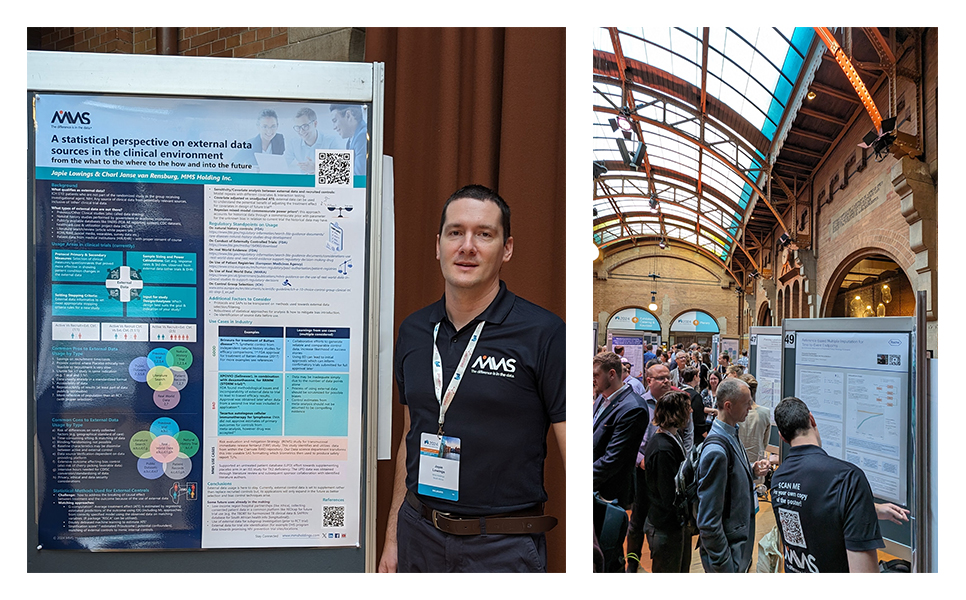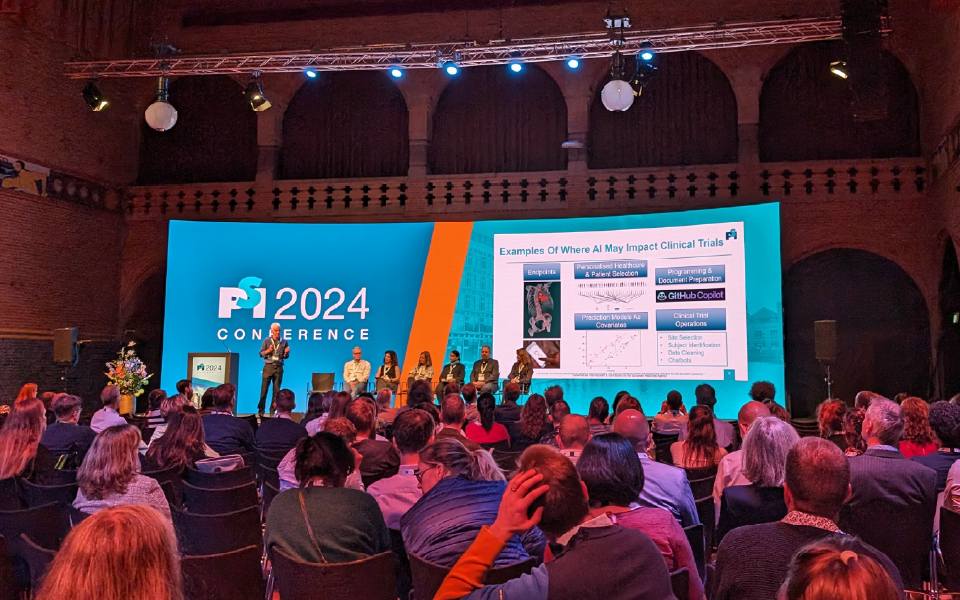The PSI 2024 Conference at Beurs van Berlage in Amsterdam, The Netherlands brought statisticians and leaders in the pharmaceutical industry together from across the globe. The energy was invigorating and great conversations were the norm, among the hundreds of attendees.
During the event, it was clear that statisticians from all levels across the pharmaceutical landscape were looking to drive innovation and embrace new practices to move the industry forward. One of these conversations focused on the use of external data sources.
External Data Sources in the Clinical Environment
Japie Lowings & Charl Janse van Rensburg presented a poster titled, “A statistical perspective on external data sources in the clinical environment from the what to the where to the how and into the future.” The poster is available here for review.
This was part of a popular topic threaded throughout the annual PSI conference, with multiple discussions debating the pros and cons of greater consideration for external data use. The poster by Lowings and van Rensburg anticipates even further adoption and the need for adaptive design trials within the pharmaceutical industry, which have external data ‘baked-in’ to the clinical study design.
Specifically, it will be critical to engage and support Sponsors at the earliest stage possible in the clinical trial design process, collaborating together on the protocol development, efficiently assessing the risks and options to drive endpoint success, implement optimal sample sizes, and ultimately accelerate development. Internally, we find that its best to partner closely with the Regulatory Strategy team, bringing deep understanding of FDA and other Regulatory Agency mechanics and review process to enable Sponsors to better anticipate and answer the most likely Agency queries.

Challenges in the Requirements for Estimands
As observed at the PSI event, statistics presenters and other thought leaders were aligned that the requirements for Estimands (as per ICH-E9 (R1)) present a shared challenge across the pharmaceutical industry. Typically, the statistician needs to ‘retro-fit’ Estimands into the Statistical Analysis Plan (SAP), in order to reflect the finalized or near final protocol.
The importance of having Estimand determination from the get-go is clear, with early collaboration in the clinical study protocol design process, between the statistician and clinical staff.
The benefit for this exists in strongly linked efficacy objectives and Estimands with truly fit-for-study endpoints and analyses that consider the confounding factor of intercurrent events, for instance.
Bayesian Methodology on the Rise
The use of Bayesian methodology within efficacy analyses was another trending theme throughout the event. A presentation from one of the European Medicines Agency’s (EMA) methods working group members, provided insightful viewpoints on the EMA’s current position with regards to the use of Bayesian methodology for sensitivity and confirmatory purposes.
However, greater consideration is needed regarding Bayesian methodology use for Primary Endpoints which would likely present challenges for EMA acceptance, particularly if frequentist methodology to do the same exists. In this scenario, early communication with the EMA in the planning stages appears key, in order to fully assess the methodology as ‘fit-for-purpose’ and is applied prudently.
From experience, one can recognize the criticality of this early communication and careful assessment on the feasibility of including a Bayesian approach. By leveraging in-house expertise, MMS biostatisticians across the globe can efficiently guide Sponsors through Bayesian method assessments, and in parallel, fully explore and assess other less-complex alternatives, likely to yield a similar result.
To discuss these insights highlighted above in further detail, please click here and we will connect you with the appropriate expert.
Authored by:
- Japie Lowings, Manager, Biostatistics at MMS Holdings
- Lucy Sutton, Vice President at MMS Holdings





